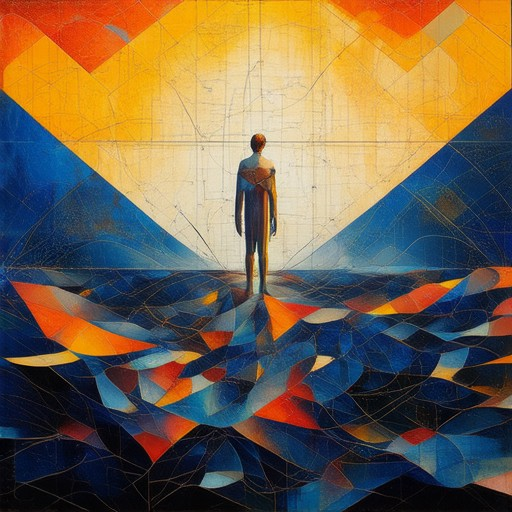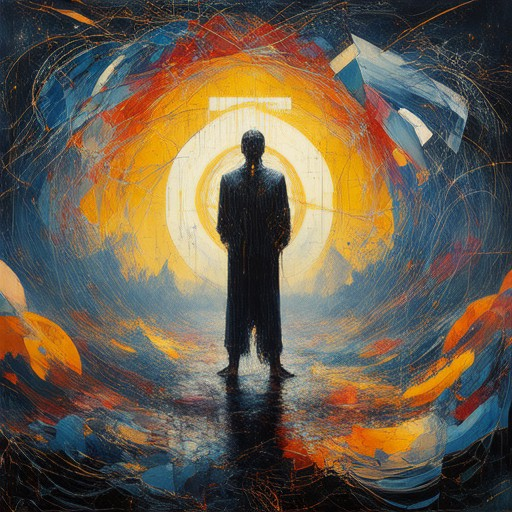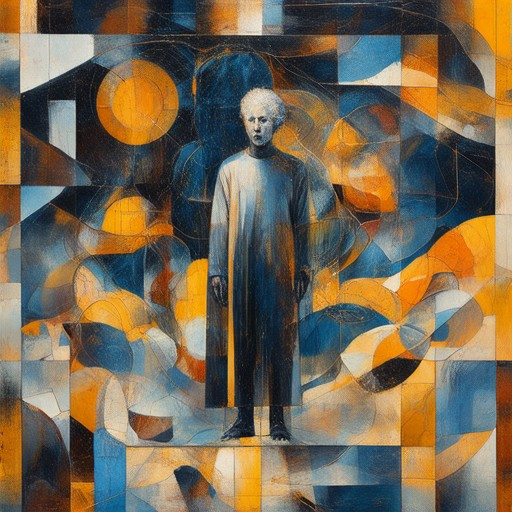Creating a compelling game narrative is a cornerstone of successful video game development, shaping player experiences and driving engagement. Whether you’re designing a fantasy epic, a gritty realistic tale, or an innovative sandbox adventure, the art of game narrative planning is crucial. This comprehensive guide delves into the essential aspects of crafting a memorable and immersive story, offering step-by-step strategies, practical examples, and insights into the evolving landscape of game storytelling. From understanding the key elements of a game narrative to exploring future trends in narrative design, this article serves as your ultimate resource for mastering the art of game narrative planning. By leveraging expert tips and proven methodologies, you’ll learn how to craft a story that resonates with players, leaving them eager to explore your world and immerse themselves in your vision.
Key Takeaways
– Game Narrative Designer Salary: Earns an average of $70,000 to $120,000 annually in the U.S., influenced by location, experience, and studio size.
– Highest-Paying Game Design Roles: Senior Game Designer ($60k–$120k/month), Lead Game Designer ($70k–$150k/month), Creative Director ($200k–$300k/month), and Art Director ($80k–$180k/month) lead the way in salary.
– Game Writer vs. Narrative Designer: Game writers craft specific written content like dialogues and storylines, while narrative designers shape the overarching story structure and themes.

How to Create a Game Narrative
To craft an engaging and memorable game narrative, follow these key steps:
- Define Your Core Theme : Start by identifying the central theme or concept of your game. Whether it’s a quest for survival, a battle against corruption, or a personal journey of self-discovery, ensure your story revolves around a clear and compelling theme.
- Develop Memorable Characters : Create protagonists and antagonists that players can connect with. Give your characters depth, motivations, and flaws to make them feel real and relatable. Consider adding supporting characters who play pivotal roles in the story.
- Build a Rich World : Construct a detailed setting that enhances the story. Whether it’s a vast fantasy realm, a desolate post-apocalyptic world, or a futuristic cityscape, the environment should reflect the tone and themes of your game.
- Structure the Plot : Use a strong narrative framework to guide players through the story. A classic three-act structure works well: Introduction, Confrontation, and Resolution. Allow for branching paths to keep the story dynamic and player-driven.
- Establish Conflict and Stakes : Create meaningful conflicts and high-stakes situations that push your characters forward. The challenges should feel personal and impactful, motivating players to continue exploring the story.
- Pace the Storytelling : Balance action sequences with narrative moments. Too much action can overshadow the story, while too little can bore players. Find the right rhythm to keep the narrative engaging.
- Incorporate Interactive Elements : Use dialogue trees, choices, and branching paths to let players influence the outcome. This adds replayability and allows players to see the impact of their decisions.
- End with a Meaningful Conclusion : Provide multiple endings based on player choices. Each ending should offer a satisfying closure that ties back to the game’s theme and character development.
- Leverage Cultural Touchstones : Draw inspiration from well-known stories, myths, and cultural references to resonate with a broader audience. However, always ensure your narrative remains original and true to your vision.
By following these guidelines, you can create a game narrative that captivates players, immerses them in your world, and leaves a lasting impression.
Example of a Game Narrative
A game narrative is the story or plot that drives the gameplay and immerses the player in the game world. A well-crafted narrative can greatly enhance the player’s experience, making the game more engaging and memorable. Here are some examples:
1. Character-Driven Stories
- In games like The Legend of Zelda: Breath of the Wild , the narrative revolves around Link, a hero on a quest to save the world. The story is told through cutscenes, dialogue, and the player’s actions, creating a deep emotional connection with the protagonist.
2. World-Building Stories
- Minecraft is a prime example of a game with a rich narrative built into its world. The vast, blocky universe encourages players to explore, build, and survive, creating their own stories within the game.
3. Cultural or Historical Themed Narratives
- Games like Assassin’s Creed are set in historical periods, allowing players to become modern-day Assassins reliving the events of figures like Ezio Auditore da Firenze. The narrative combines fact with fiction to create an immersive experience.
4. Indie Game Innovations
- Independent games often experiment with unique storytelling methods. For instance, Undertale subverts traditional RPG tropes by giving players moral choices that affect the outcome of the story, creating a non-linear narrative.
5. Collaborative Storytelling
- In No Man’s Sky , players can share their discoveries and stories with others, contributing to a shared universe. This collaborative aspect allows for a diverse range of narratives, as players create their own lore and adventures.
Why Great Narratives Matter
A strong narrative enhances replayability, emotional investment, and memorability. It helps players connect with the game world, characters, and objectives, making the overall experience more fulfilling.
For more insights on crafting compelling game narratives, visit our Game Development Tutorials section or explore our list of Top Games that excel in storytelling.

Game Narrative Design Explained
Game narrative design refers to the process of crafting and developing the story elements within a video game, ensuring that the narrative aligns with the game’s mechanics and player interactions. This distinct approach differs from traditional writing by emphasizing player agency and interactivity.
Key Components of Game Narrative Design
- Player Agency: This concept allows players to influence the game’s story through their actions and decisions. Narrative designers create multiple pathways based on these choices, ensuring each decision feels impactful and meaningful.
- Storytelling Through Multiple Mediums: Narratives in games aren’t confined to cutscenes. Elements like in-game dialogue, emails, journals, and environmental cues contribute to the overarching story, requiring careful integration.
- Moral and Ethical Choices: Designers craft scenarios where players face dilemmas with far-reaching consequences. These choices drive branching narratives, adding depth and replay value.
- Collaboration with Development Teams: Close teamwork with artists, programmers, and designers ensures the story complements the game’s technical aspects, balancing narrative with gameplay.
- Adaptation and Iteration: Feedback from playtesting informs adjustments to story elements, ensuring a cohesive and engaging experience that resonates with players.
Evolving Trends in Game Narrative Design
As technology advances, narrative design has embraced new tools like motion capture and virtual reality, expanding the ways stories are told. Designers adapt their approaches to suit emerging platforms, enhancing immersion and accessibility.
Challenges and Considerations
Narrative designers must balance a compelling story with gameplay mechanics, avoiding domination by either element. They also aim to create narratives that inspire thematic depth, ensuring the story reflects the game’s intended purpose and resonates emotionally with players.
The Role of Interpretation
Successful narratives often invite player interpretation, with hidden clues and multiple endings that encourage exploration. This approach deepens engagement, encouraging players to revisit the game for different outcomes.
Conclusion
Ultimately, game narrative design is a blend of artistic vision and technical execution, creating a personalized experience that evolves with each player’s choices. This unique combination of storytelling and interactivity defines the essence of game narrative design.

Game Narrative Designer Salary
The salary for game narrative designers can vary significantly depending on several factors:
- Average Salary Range:** Approximately $70,000 to $120,000 annually in the United States.
- Location:** Professionals working in major cities like San Francisco or Los Angeles tend to earn higher salaries due to the cost of living and demand for their skills.
- Experience:** Entry-level positions may start around $45,000 to $65,000, while senior-level designers can earn upwards of $100,000 to $130,000.
- Studio Size:** Employees at larger, well-known studios such as AAA game developers often receive higher pay packages compared to those at independent or mid-sized studios.
Additionally, many employers offer bonuses, stock options, and profit-sharing plans to attract top talent. Benefits may include health insurance, retirement contributions, and paid time off, further enhancing overall compensation.
What is the Highest Paying Job in Game Design?
Game design offers a variety of roles, each with differing salaries and career paths. Here are some of the highest-paying positions in the field:
-
Senior Game Designer
As experienced professionals, senior game designers often command high salaries due to their expertise in creating engaging gameplay mechanics and designing immersive worlds. According to recent industry reports, senior game designers can earn between INR 60,000 to INR 120,000 per month, depending on location and experience.
-
Lead Game Designer
Lead game designers are responsible for overseeing the entire design process, from concept to completion. Their roles involve collaborating with developers, artists, and other team members to ensure the project meets both creative and technical standards. Lead game designers typically earn between INR 70,000 to INR 150,000 monthly.
-
Creative Director
At the top of the hierarchy, creative directors oversee the entire creative vision of a game. They work closely with the development team to align the game’s design with the company’s goals. Creative directors often have significant influence on the project’s success and can earn upwards of INR 200,000 to INR 300,000 per month.
-
Art Director
While not a designer themselves, art directors play a crucial role in shaping the visual style of a game. They oversee the work of artists and ensure the game’s visuals are cohesive and visually appealing. Art directors generally earn between INR 80,000 to INR 180,000 monthly.
These roles often require extensive experience, strong portfolios, and the ability to work in collaborative environments. Companies like Gamut Jobs and Gamasutra frequently list high-paying opportunities in game design.

What is the difference between a game writer and a narrative designer?
A game writer and a narrative designer are both integral to game development, but their roles differ significantly in focus and execution.
Game Writer
A game writer is responsible for creating and developing the written content within a game. This includes:
- Writing dialogues for characters
- Designing mission or quest descriptions
- Crafting storylines and narratives
- Creating in-game descriptions and lore
The game writer often works closely with the creative director and other writers to ensure consistency across the game’s story. Their primary goal is to deliver engaging and immersive written content that complements the game’s visuals and gameplay.
Narrative Designer
A narrative designer is responsible for shaping the overall story arc, theme, and direction of the game. This involves:
- Developing the core concept and themes
- Collaborating on character development
- Outlining the plot progression
- Ensuring the narrative aligns with the game’s mechanics
The narrative designer works closely with artists, programmers, and other designers to ensure the story fits seamlessly into the game’s world and mechanics. Their role is more about the big picture rather than individual scenes or lines of dialogue.
Comparison
While both roles contribute to the story, the game writer focuses on the written word, while the narrative designer focuses on the overarching narrative structure and thematic elements.
Conclusion
In summary, a game writer is responsible for creating the specific written content that brings a game’s story to life, while a narrative designer shapes the story’s direction, themes, and structure. Both roles are essential for creating an engaging and cohesive gaming experience.




0 Comments